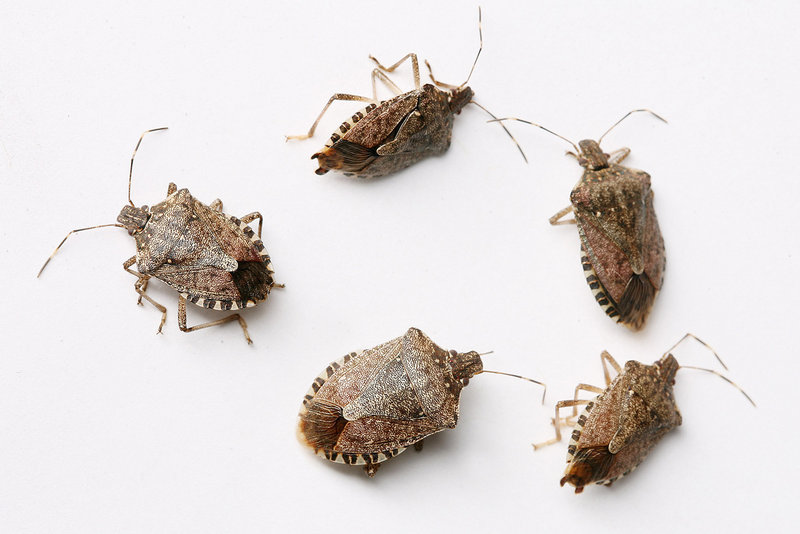WASHINGTON – Shaped like shields and armed with an odor, dime-size brown bugs are crawling into area homes over windowsills, through door crevices and between attic vents in such numbers that homeowners talk about drowning them in jars of soapy water, suffocating them in plastic bags or even burning them with propane torches.
In the process, some people are unwittingly creating another problem: When squashed or irritated, the bugs release the distinctive smell of sweaty feet.
Get used to it, experts say: The invasion is only going to get worse.
“This is the vanguard,” said Mike Raupp, a University of Maryland entomologist and extension specialist.
“I think this is going to be biblical this year,” he said. “You’re going to hear a collective wail in the Washington area, up through Frederick and Allegany counties, like you’ve never heard before. The (bug) populations are just through the ceiling.”
The change in season, as days shorten and nighttime temperatures start to dip, is nature’s call to the brown marmorated stink bug to seek refuge inside.
What’s happening now is a massive population shift from orchards, cornfields and gardens, to suburban homes, office buildings and hotels — the urban U.S. equivalents of rocky outcroppings in the stink bug’s native Asia.
Stink bugs are harmless to people and their possessions. They don’t bite. They don’t sting. They’re not known to transmit disease. But their population has grown so tremendously that they are not only causing vexation to homeowners, but also, for the first time, wreaking damage to fruit and vegetable crops, from peaches and apples to soybeans and corn and even ornamental shrubs and trees.
There is no easy way to kill lots of bugs at once. They have no natural predators in the United States; existing pesticides don’t work effectively. They travel easily — hitching rides on the backs of buses, in packing materials, on cement blocks — and adapt to winter in homes.
As a result, they have flourished, spreading to 29 states since they arrived in Allentown, Pa., in 2001, likely stowaways in a shipping container from Asia.
And now they are causing a stink in the mid-Atlantic region.
Experts say homeowners should prevent the pests from coming indoors by sealing cracks with caulk and using weather stripping around doors and windows.
If the bugs do get inside, residents can vacuum them up, remove the bag and put it in the garbage. The danger, though, is that squashed stink bugs can smell up the vacuum cleaner. Experts warn against using pesticides not intended for residential applications because that can cause illness and make homes unsafe — and might not solve the problem.
Send questions/comments to the editors.



Success. Please wait for the page to reload. If the page does not reload within 5 seconds, please refresh the page.
Enter your email and password to access comments.
Hi, to comment on stories you must . This profile is in addition to your subscription and website login.
Already have a commenting profile? .
Invalid username/password.
Please check your email to confirm and complete your registration.
Only subscribers are eligible to post comments. Please subscribe or login first for digital access. Here’s why.
Use the form below to reset your password. When you've submitted your account email, we will send an email with a reset code.